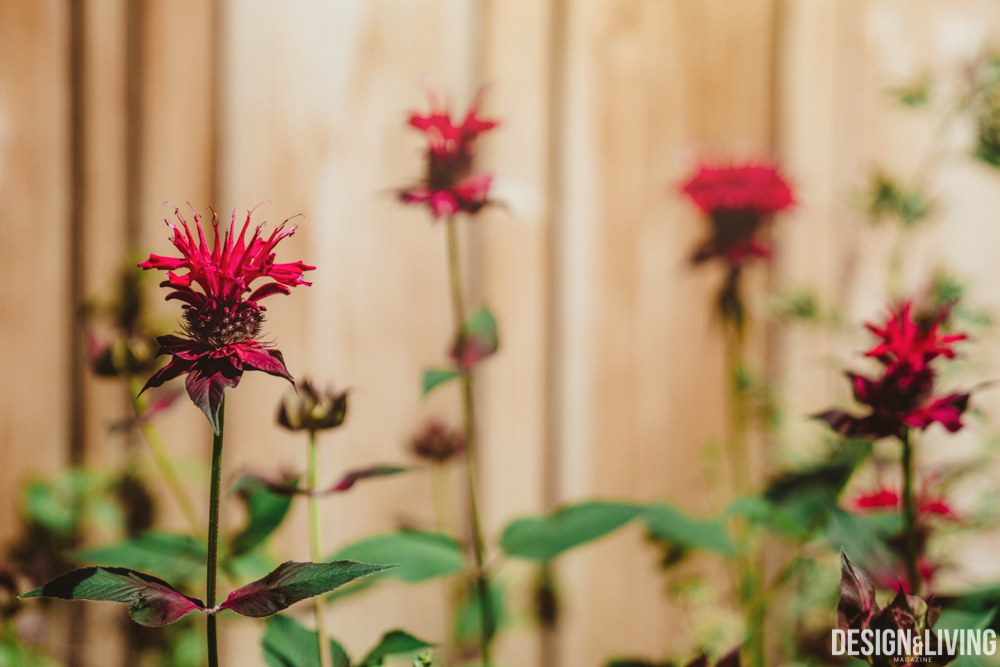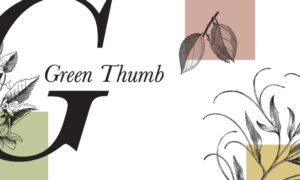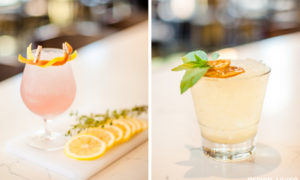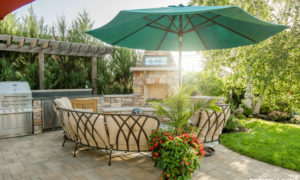Photos by Hillary Ehlen
The front of sculptor Dwight Mickelson’s house in Moorhead is traditional and warm. A sidewalk leads up to a welcoming porch where a Norwegian flag waves, honoring much of our region’s heritage. However, a walk around the corner reveals a different nod to our region’s narrative, a micro-prairie.
The imagery of tallgrass prairies on rolling hills has been long associated with our region. As many of us are proud of this ecology, these prairies are disappearing. Newly minted as a 501c3, The Longspur Prairie Fund exists to conserve our local natural heritage, something we can do right here in our backyards.
In Longspur Prairie Fund’s efforts to preserve an educate, they’ve begun helping the community establish micro-prairies in town. A micro-prairie is a fully articulated prairie ecosystem existing on a small scale. Plants and insects that you find in a natural prairie can grow and thrive in urban micro-prairies, creating a habitat where it is most sparse. No plot of land is too small for this ecosystem to be installed, even a few square feet of native planting can create a corridor where pollinators can come and flourish.

Dwight Mickelson has been maintaining his side-yard micro-prairie for about three years now. He was one of the first to create a micro-prairie in the Fargo-Moorhead area and is helping show the beauty of this ecological necessity. He began his garden with prairie remnant from his family’s farm in Hawley, Minn. Every year, he takes more native seeds and inter-seeds the plot to come up even more whole and lush each season. Mickelson currently serves at the president of the board of directors of the Longspur Prairie Fund, where his intermixed admiration of arts and the earth come together.
As an artist, Mickelson is a metal-worker, furniture-maker and sculptor. Since 2005, he’s operated as Mickelson Metal Studio and creates sustainably-made pieces of art. Sprouting up between tall grasses and budding flowers you can see metal sculptures of his standing in contrast to the soft, natural grasses. The hard and softness play with each other, complimenting the art that is within nature.

Once established, micro-prairies are maintenance-free and beautiful. The fully articulated prairie seed mix used produces plants of all heights, textures and colors. In one small plot, you can find a rainbow of colors like fuchsia, yellow, violet, white and, of course, lots and lots of greens. Flirting around are pollinators, happy to find a refuge to play in.
In the region (and across the United States) bee species have been declining in numbers due to the loss of their natural habitats. This decrease in pollinators affects our food supply, as bees are integral in the insect pollination of many crops. However, official Pollinator Habitats like Mickelson’s provide valuable settings for bees and other pollinators. The more pollinator habitats we can rebuild or create, the better our native pollinators will do.

“We’re trying to create as many [micro-prairies] in businesses and residential homes and yards to try and create as much habitat as possible, “said Longspur Prairie Fund’s assistant director Cady Ann Rutter. Rutter also noted that our area lends itself to be eco-minded and ready to help serve as stewards, making the growth of these preservational efforts more successful.
Compared to standard lawns, these micro-prairies like Mickelson’s provide a source of food and life that, comparatively, is much more active and buzzing. When a life source is this beautiful and nontraditional, we expect to see much more of these popping up around town.
Want to house a micro-prairie in your yard or business? Visit longspurprairie.org and reach out to their team. The Longspur Prairie Fund can walk you through the steps of what it takes to use native plants to create a beneficial pollinator habitat.













